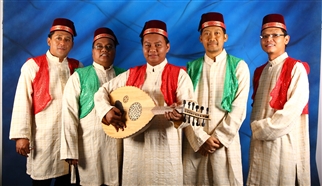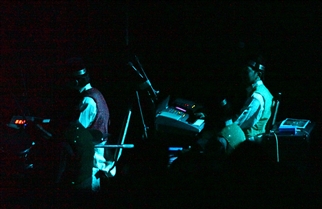
Music in Bangsawan has several functions:
- To create the mood and bring out the effects of sad, joyous, fearful or suspense situations in the story presented.
- To enhance the dramatic effect of the story concerned.
- As a cue for the beginning and the finale of a scene/ an act; entrance or exit of the actor.
- To establish the character, announce the ideas, assist the action in the story plot.
- As a song accompaniment.
- During the intermission period or extra turns (occurs while waiting for the work of arranging the stage to complete) music would be played to accompany the singer(s), dance(s), or magic or physical scenes. If there are no singing or dancing, instrumental songs would be played.
Basically, the music heard in the bangsawan is an interaction and fusion of various Malay, West, India, Middle East, Jawa, Latin American elements from outside the country. In them are Malay, Middle East, Jawa, Hindustan, Chinese and Western Classic songs.
The rhythm and tempo derived from the West are for example the Waltz, March, Tango, Ragtime, Foxtrot and Quickstep. The Malay rhythms are taken for example those from the Inang and Joget. Middle East rhythms such the Masri, Zapin, Gambus are also used. Jawa rhythms are those taken from the Stambul and Keroncong including Hindustan rhythms.

